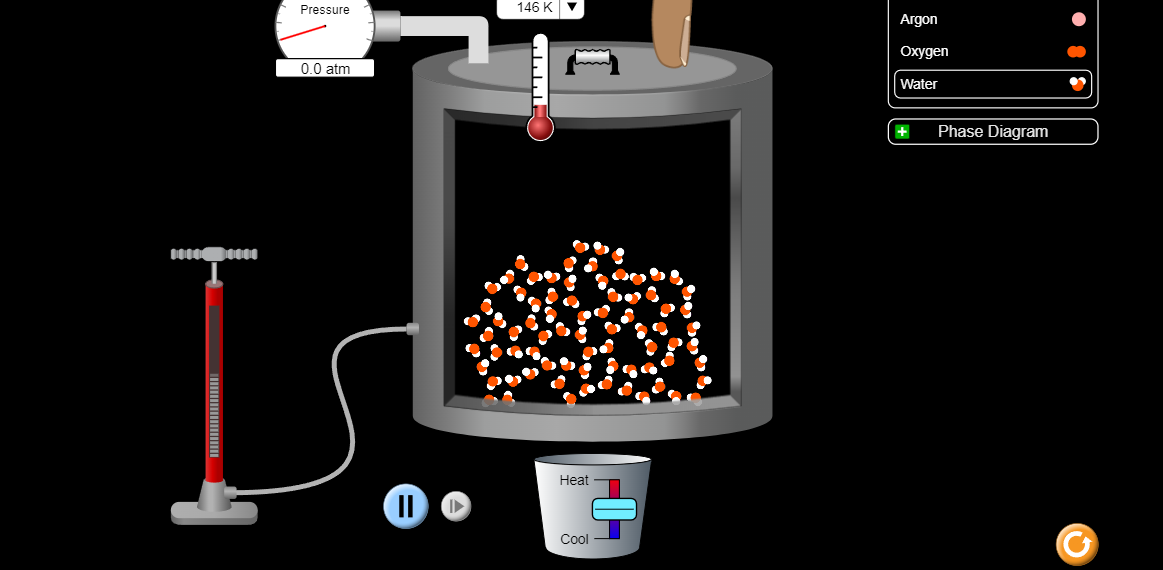Middle level ICT integration
Today we were oriented on using PhET simulation and it one of the interactive tools that a teacher can use to make teaching and learning more interactive and meaningful. PhET simulation covers a wide range of topics, including physics, mathematics and more. It helps in demonstrating complex concepts in a visual and interactive way and also make easier for the students to understand and retain the information. From my opinion, this simulation will helps in students academic performance as most of the students learn better through visual representation. It helps in developing critical and creative thinking of the students as they are given an opportunity to explore and learn independently. This provides hands-on learning experience and encourage active engagement of the students. It also helps in developing collaborative learning as students ask questions and doubt to others whenever they struggle. As a result, they build a positive bonds and learn from one another. So, incorporating of PhET simulations into the ICT classroom can help in creating a engaging classroom and promotes deeper understanding of the complex topics and further foster a love for learning.
The Middle level ICT integration refers to the incorporation of the ICT tools, resources, and practices into the curriculum and teaching strategies. This integration aims to make students more aware of the digital tools and to enhance the ability to use ICT effectively for learning. It helps students in building problem solving skills as well as helps to develop creative thinking skills. In the middle level of ICT integration, technology has a very important role to play, providing both students and teacher with crucial materials or activities. In this level, teachers purposefully uses the technology to provide supports at key point during the lesson. Moreover, teachers continue to teach in traditional ways, but incorporate technology to supplement these teaching method.
Compared to olden ways of teaching, PhET simulation had varies advantages as it boost the interest of the students. For example, in the past days students were never introduced to technology and as a result the leaning of the students were monotonous. I would say that it was teacher centered where all the works were done by the teachers and students act as a active listeners. However, in the 21st era students are more or less aware with the technology and the leaning become more interesting and meaningful. In the olden days, teaching were based on traditional lectures, textbooks, and rote memorization. These method were not engaging and not helping students to understand the complex concepts effectively. On the other hand, teaching with PhET simulation can provides more interactive and engaging learning experience for students. By using PhET simulations in the classroom, teachers can create more hands-on and interactive learning experiences that can help students grasp difficult concepts more easily.
Sydney lesson plan
Lesson plan: 2
Class: IV Subject: Science Date:19/04/2024
Topic: States of matter
Previous knowledge: Students already know about the matter
Material required: PhET simulation
Lesson objectives: At the end of the lesson, the students will be able to:
1. identify and describe the characteristics of of the three states of matter (solid, liquid and gas)
2. understand the concept of phase changes and how they are related to the movement of particles.
3. use PhEt simulations to observe and manipulate the behavior of particles in different states of matters.
Lesson Introduction:
Exchange of greetings,
* Ask students what they know about matter and make them discuss in group about the definition of matter, Make the students to share their answers with the group members.
* Then, begin the class by discussing the three states of matters: solid, liquid and gas. Define each states of matters and provide examples.
* Explain that matter can undergo phase changes, such as melting, freezing, evaporation, and condensation, which involve the rearrangement of particles.
Lesson Development:
* Divided the class into small groups and assign each group a specific state of matter to focus on (solid, liquid and gas)
* Instruct students to access the PhET simulation and spend time exploring the behavior of particles in their assigned state.
* Encourage the students to manipulate temperature and observe how it affects the motion of particles and state of matter.
(The students will be given only 15 minutes to complete the given tasks)
Particles in solid
Particles in liquid
Lesson closure :
* * Ask students on how particles are arranged in each state of matter (solid, liquid and gas)
*Summarize the key points covered in the lesson, emphasizing the importance of understanding states of matter and phase changes in Science.
*Encourage students to continue exploring PhET simulations and other interactive resources to deepen their understanding of scientific concepts.




.png)
No comments:
Post a Comment